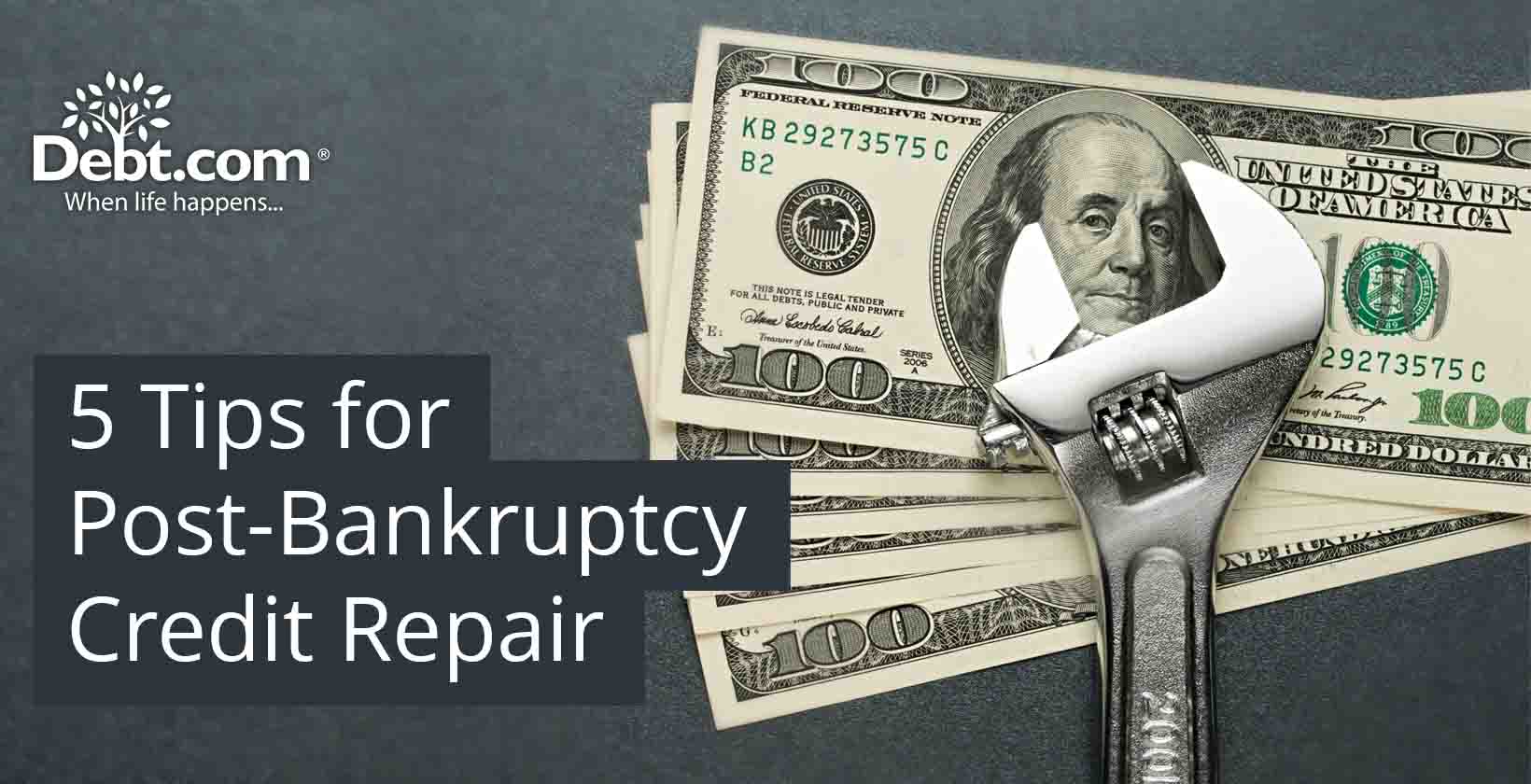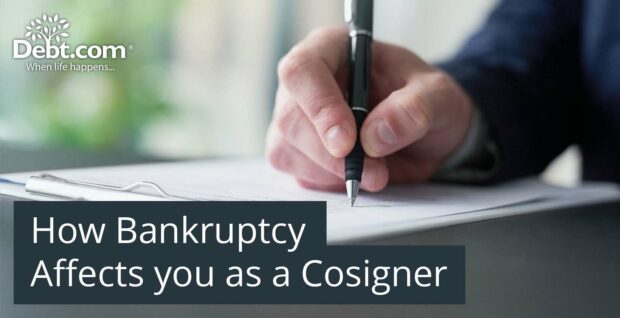
Bankruptcy has long had an unnecessary negative social stigma. Although it may feel like a major setback, it can be an opportunity for a fresh start. Bankruptcy is an option to legally remove responsibility for extreme debt amounts. Unfortunately, the tradeoff is it substantially damages your credit for up to seven to 10 years. Rebuilding credit after bankruptcy is crucial for regaining financial independence. Do you wonder how to rebuild credit after bankruptcy? How long the process takes? Or where to begin?
Table of Contents
Understanding credit repair after bankruptcy: why it matters and what to expect
Bankruptcy is a legal process that provides relief to those overwhelmed by debt. There are two primary types: Chapter 7 and Chapter 13. In Chapter 7, assets are liquidated to pay off creditors, and the remaining debts are often discharged.
Chapter 13, on the other hand, involves a repayment plan that spans several years, allowing individuals to repay all or part of their debts over time. The type of bankruptcy you file determines how your credit is affected and how long the impact lasts.
Both types of bankruptcy severely impact your credit, with Chapter 7 staying on your credit report for up to 10 years and Chapter 13 for seven years. The immediate impact usually includes a significant drop in your credit score.
A lower credit score reduces your ability to access home loans, car financing, and employment prospects in certain industries. It’s important to understand that while the effects of bankruptcy can feel overwhelming, they aren’t permanent, and you can take concrete steps to rebuild your credit over time.
Why credit repair matters after bankruptcy
Repairing credit after bankruptcy helps you regain access to loans, qualify for better interest rates, and stabilize your financial situation. Rebuilding credit is about gaining access to new lines of credit and proving that you can responsibly manage your finances again. Whether you want to buy a home, finance a car, or simply regain financial peace of mind, rebuilding credit is the key to achieving these goals.
Repairing credit after bankruptcy is not instantaneous, and it requires persistence. However, it’s crucial because it helps you regain financial confidence and provides the tools needed to reach milestones that may seem out of reach after bankruptcy. This guide will show you practical steps to rebuild your credit, restore your financial health, and regain the trust of lenders.
What to expect in this guide
This guide will cover everything you need to know, from understanding how bankruptcy affects your credit to the actionable steps you can take to repair it. We’ll explore strategies like secured credit cards, credit-builder loans, and the importance of on-time payments. We’ll also address common myths to set realistic expectations about the process. By the end of this guide, you’ll have a clear, step-by-step plan to rebuild your credit and position yourself for future financial success.
Understanding the impact of bankruptcy on credit
How bankruptcy is reflected on your credit report
When you declare bankruptcy, it becomes part of your credit history, appearing in public records and the credit account section of your credit report. Depending on the type, bankruptcy remains on your credit report for seven-10 years. It is typically one of the most negative marks on your credit report and will significantly affect your credit score.
In addition to the public record of the bankruptcy, individual accounts included in the bankruptcy will also be noted as discharged through bankruptcy. These notations and the public record of the bankruptcy itself paint a clear picture of your financial struggles to lenders. However, as time passes and new positive information is added to your credit report, the impact of bankruptcy will begin to diminish. Being proactive and intentional about rebuilding after bankruptcy is important, as time alone won’t improve your credit.
Effects on your credit score and financial opportunities
A bankruptcy filing generally results in a drastic drop in credit score, potentially by 150 to 200 points or more, depending on where you started. This decline limits your options for accessing credit in the short term. Securing loans, credit cards, and rental agreements can become more challenging. Moreover, if you qualify for credit products, they will often come with significantly higher interest rates, increasing the cost of borrowing.
However, you can see improvement over time by establishing good financial habits. Positive behaviors, like paying your bills on time, keeping debt levels low, and using credit responsibly, are key to gradually increasing your score. Every small action toward building a positive payment history will move you in the right direction.
It’s important to remain patient, as rebuilding your credit score after bankruptcy takes time.
Common myths about bankruptcy and credit
It’s common to think rebuilding credit after bankruptcy is impossible, but that’s not true. While bankruptcy wipes out certain debts, it doesn’t erase every obligation. For instance, student loans, child support, and tax obligations typically cannot be discharged. Another common myth is that bankruptcy means you will never be able to obtain credit again. In reality, many individuals receive credit card offers within months of bankruptcy. The key is to be selective and choose options that will help you rebuild rather than lead to more financial trouble.
With diligence, you can rebuild your credit profile and eventually be in a better financial position than before.
Initial steps to repair your credit after bankruptcy
Review and verify your credit report
Your first step should be obtaining free credit reports from Equifax, Experian, and TransUnion. Through AnnualCreditReport.com, you are entitled to one free report from each bureau annually.
After bankruptcy, you must ensure that all discharged debts are correctly marked on your credit reports. Errors like incorrectly listed balances or accounts incorrectly marked as discharged can drag down your score.
Ensure all discharged debts are correctly marked, and there are no errors. You’ll also want to ensure the bankruptcy is listed accurately and has the correct filing date. Correcting inaccuracies can boost your score, and disputing errors is the first actionable step in your post-bankruptcy credit repair journey.
Dispute any inaccuracies on your credit report
If you find errors in your report, it’s crucial to dispute them promptly. You can submit disputes to the credit bureaus online or by mail. A well-written dispute letter, including documentation of the inaccuracies, can go a long way in getting these issues resolved. The credit bureau must investigate your dispute and respond typically within 30 days.
Successfully removing inaccuracies can lead to a noticeable improvement in your credit score, giving you momentum as you rebuild.
While the dispute process might seem daunting, it is critical to ensure that your credit report is accurate and reflects your current financial situation. Keep copies of all correspondence and be diligent about following up.
Create a post-bankruptcy financial plan
Now is the time to build a budget and stick to it. Creating a post-bankruptcy financial plan includes tracking your income and expenses closely. Use financial tools and apps to monitor your expenses. Budgeting isn’t just about avoiding debt; it’s also about achieving financial stability and staying disciplined with your spending. Establishing an emergency fund is also important. Setting aside a small amount each month can prevent future financial pitfalls that could otherwise force you into debt.
A solid financial plan will help you stay on track and prevent the behaviors that led to financial trouble in the first place. Setting realistic financial goals, like saving for a car or a home, can help keep you motivated during the credit-rebuilding process. Remember, it’s about repairing your credit and establishing a foundation for long-term financial well-being.
Strategies for rebuilding credit after bankruptcy
Start with a secured credit card
Secured credit cards are designed for people with damaged credit. You can open a secured card by depositing money to build a positive payment history. The deposit acts as your credit limit, which minimizes the lender’s risk. Look for a card with minimal fees and use it responsibly, keeping balances low and paying in full monthly. The goal is to establish a record of on-time payments.
Secured credit cards are among the easiest credit products to qualify for after bankruptcy. After demonstrating responsible usage for a period of time, you may eventually qualify for a traditional (unsecured) credit card, which often comes with better benefits and lower fees.
Consider a credit-builder loan
Another helpful tool is a credit-builder loan. With this type of loan, the funds you borrow are held by the lender until you pay off the loan. This creates a payment history, which is key for improving your credit score. Many community banks and credit unions offer these loans at reasonable rates, and they are specifically designed to help people with poor or no credit history build a positive record.
These loans typically have small balances and short repayment terms, making them manageable for most people. Your payments are reported to the credit bureaus, helping you establish a positive payment history that will benefit your credit score over time. By successfully paying off a credit-builder loan, you demonstrate to lenders that you can manage credit responsibly.
Become an authorized user on another’s credit card
If you have a trusted friend or family member, consider becoming an authorized user on their credit card. This allows their positive payment history to reflect on your credit report, boosting your score. Choosing someone with a strong credit history and a low utilization rate is important, as both factors can positively impact your score.
As an authorized user, you don’t have the same legal responsibilities as the primary cardholder, which means you aren’t directly liable for payments. However, the benefit lies in their on-time payments, which are reflected on your credit report. Ensure they have responsible credit habits before pursuing this option, as any negative activity can also affect your credit.
Pay bills on time every time
On-time payments make up a significant part of your credit score. Setting up reminders or automatic payments for bills is an effective way to ensure consistency, helping you rebuild your credit after bankruptcy discharge. Payment history accounts for 35% of your credit score, so consistency is key.
Missing even one payment can significantly reduce your progress, especially as you’re trying to recover from bankruptcy. Use tools like calendar alerts, budgeting apps, or auto-pay features provided by most banks to ensure that your payments are always on time. The goal is establishing a reliable pattern showing creditors they can trust you.
Using rent and utility payments to boost credit
Tools like Experian Boost allow you to report rent and utility payments, which can positively impact your credit score. You can also use third-party rent-reporting services to ensure all timely payments are counted. These are especially useful if you’re currently renting, as they help create a positive payment history where otherwise none might be reported.
Some services can also report phone and internet bills, giving you even more opportunities to add positive information to your credit report. Every positive account on your credit report contributes to an improvement in your overall credit profile.
The role of automatic payments in preventing missed bills
Setting up automatic payments can help eliminate the risk of missed payments, which is crucial for credit repair. Automatic payments are helpful for fixed, recurring bills like utilities, rent, and minimum credit card payments. Be mindful of your account balances to avoid overdrafts, but the peace of mind it offers is worth it.
Automatic payments help ensure that your bills are always paid on time, contributing to a positive payment history and helping you rebuild credit more efficiently. Setting up automatic payments for at least the minimum due can help you avoid late fees and prevent damage to your credit.
Building healthy financial habits for sustainable credit recovery
Practice responsible credit use
To repair your credit, practice responsible use: keep balances low and pay them off monthly. Aim to keep your credit utilization rate under 30%. This shows lenders that you can responsibly manage the credit available to you. Try to pay off your balances in full each month to avoid interest charges and demonstrate to lenders that you can handle credit without relying too heavily.
If you have multiple credit cards, keeping a low balance on each is better than carrying a large one. Credit utilization is a significant factor in determining your credit score, so by managing your balances wisely, you can see improvements more quickly.
Avoid high-interest loans and predatory lenders
It’s tempting to jump into any credit offer after bankruptcy but beware of high-interest loans and predatory lenders. Predatory loans, such as payday loans, often come with exorbitant fees and interest rates that can quickly trap you in a cycle of debt. Instead, look for low-interest credit options through credit unions or reputable institutions.
If you need a loan, consider a personal loan from a community bank or credit union, which often offers better terms than payday lenders. The key is to take on new debt if necessary and ensure you can comfortably manage the payments.
Monitor your credit progress regularly
You should regularly monitor your credit. Many free services, like Credit Karma and Credit Sesame, provide updates and alerts about changes to your credit report. Regular monitoring also helps you quickly identify any inaccuracies or signs of fraud, such as unfamiliar accounts or hard inquiries you didn’t authorize.
Monitoring your credit doesn’t just help you catch mistakes; it also helps you stay motivated. Seeing positive changes, no matter how small can be incredibly encouraging during the credit-rebuilding process. If you notice areas that are stagnant or need improvement, you can take action before they negatively affect your progress.
Managing Debt-to-Income Ratio for Ongoing Credit Health
Maintaining a healthy debt-to-income (DTI) ratio is crucial for ongoing credit health. Lenders look at your DTI to assess how much of your income is already allocated to debt. Aim to keep your debts manageable relative to your income, ideally below 36%. A lower DTI ratio not only makes it easier to qualify for credit in the future but it also indicates to lenders that you’re not overextended.
Reducing unnecessary expenses or increasing income are effective strategies to lower your DTI. Consider taking on a side gig or freelance work to bring in extra income, which can then be used to pay down existing debts. A healthier DTI ratio not only contributes to better credit but also leads to greater financial security overall.
Achieving a balanced credit mix over time
Diversify your types of credit gradually
Having a diverse mix of credit accounts is beneficial for your credit score. This could mean eventually adding a personal loan, an auto loan, or another credit card, but only once you feel ready. A balanced mix shows lenders that you can responsibly manage multiple credit types, such as revolving credit (credit cards) and installment loans (car loans or mortgages).
The goal is to diversify your credit without overextending yourself. Taking on different types of credit too soon or without proper planning can do more harm than good. Make sure you’re financially stable enough to take on new responsibilities and gradually add new types of credit to build a more rounded credit profile.
Timing your applications for new credit
Applying for new credit too soon can hurt your score. Each time you apply for new credit, it results in a hard inquiry, which can lower your credit score temporarily. It’s best to wait until you’ve shown consistent positive behavior for at least six to 12 months. When you do apply, space out applications to avoid multiple hard inquiries quickly, which could make you look desperate for credit.
When considering new credit, apply only for products that you’re confident you can qualify for. Being selective and spacing out credit applications will help prevent unnecessary hard inquiries from appearing on your credit report, preserving your score during the rebuilding phase.
How long will it take to rebuild credit after bankruptcy?
Setting realistic expectations for recovery
Short-term improvements can often be seen within six to 12 months, while significant recovery can take several years. Setting realistic goals will help you stay motivated and avoid frustration. Recovery is different for everyone, but your score will gradually improve with consistent effort.
Celebrate small victories along the way, such as paying off a credit card in full or seeing your score increase by a few points. These small milestones are stepping stones to more significant accomplishments down the road.
Key factors that influence credit repair timeline
Recovery speed depends on factors like income, debt repayment behavior, and consistency in managing credit responsibly. Every individual is different, so your timeline may vary compared to others. Factors such as whether you’re using credit responsibly, your overall financial health and your ability to make timely payments will all impact how quickly you recover.
Lenders will look for a history of on-time payments and responsible credit use before extending new credit at favorable terms. You will see progress by addressing these factors consistently, even if it sometimes feels slow. Don’t be discouraged by setbacks; focus on what you can control and celebrate your achievements.
Success stories and typical recovery journeys
Many people have successfully rebuilt their credit after bankruptcy by following the strategies outlined here. Typically, people see meaningful improvements within two to three years if they stick to a disciplined financial plan. Countless stories of individuals went from having a very low credit score after bankruptcy to achieving scores in the mid-700s within just a few years.
Success is possible, and every small step you take adds up over time. It’s important to be patient and realistic and believe in your ability to rebuild. You have the power to reshape your financial future and overcome the challenges posed by bankruptcy.
Pitfalls to avoid in credit repair after bankruptcy
Avoiding new debt accumulation
Focus on paying off existing obligations and using credit only when necessary. It’s easy to fall into the cycle of overspending again, especially once your credit score improves and offers roll in.
Only take on new debt if it serves a clear purpose, such as purchasing a home or a car, and only if you can comfortably manage the payments. The best way to prevent new debt accumulation is to stick to a strict budget and keep your spending in check.
Importance of on-time payments
Missing payments on new accounts can be disastrous. On-time payments are the cornerstone of rebuilding your credit; even a single missed payment can set you back considerably. Making on-time payments a habit that you don’t compromise on is crucial. Your goal should be to maintain a perfect payment history moving forward.
A good strategy is to set up automatic payments for at least the minimum due amount. This way, you can ensure that your accounts are always current, even if you forget a due date or face an unexpected event. Payment history accounts for the largest portion of your credit score, so missing payments can undermine all the hard work you’ve done in rebuilding your credit.
Neglecting credit monitoring
Monitoring your credit report regularly can result in errors going unnoticed or even identity theft. Your credit can be severely damaged if your identity is compromised and fraudulent accounts are opened in your name. Stay vigilant by monitoring your credit report throughout the rebuilding process.
Consider using both free and paid credit monitoring services for enhanced protection. Services like Credit Karma offer free monitoring, while others, such as myFICO, provide more comprehensive protection, including identity theft insurance. Regular monitoring will help you stay on track and prevent unexpected setbacks.
Frequently Asked Questions about rebuilding credit post-bankruptcy
Yes, getting a mortgage or car loan is possible, even after bankruptcy. However, you’ll typically need a higher down payment, and the interest rates might be higher. Waiting until your credit score has improved can help secure better terms. Generally, you may qualify for a Federal Housing Administration (FHA) loan as soon as two years after your bankruptcy discharge, provided you have maintained a positive payment history since.
Car loans may be possible sooner than a mortgage, but you must shop for the best rates and terms. Some lenders specialize in offering auto loans to individuals with a bankruptcy history. Make sure to compare offers to avoid overly high interest rates.
You should wait to establish at least six to 12 months of positive payment history before applying for new credit. This will give lenders confidence in your ability to manage credit responsibly. If you apply too soon, your application will likely be denied, which can create additional hard inquiries that harm your score.
After six to 12 months of consistent positive behavior, consider starting with a secured credit card or a credit-builder loan, as these are easier to qualify for and are specifically designed to help individuals rebuild their credit.
No, bankruptcy will not permanently prevent you from getting good credit. With diligence and persistence, improving your score and qualifying for loans and credit cards on favorable terms is possible. The bankruptcy will remain on your credit report for seven to 10 years, but its impact will lessen over time as you build a positive credit history.
The key to regaining good credit is consistently demonstrating positive financial habits. While it may take some time, many people find themselves in better financial health a few years after bankruptcy than they were before. Bankruptcy gives you a clean slate, and you can make significant improvements with the right habits.
It’s rare, but there are cases where bankruptcy can be removed if it was reported incorrectly. Otherwise, it will remain on your report for seven to 10 years. However, you can dispute errors related to bankruptcy if they exist. If the bankruptcy needs to be correctly reported or accurate information is associated with the accounts included, those may be grounds for early removal.
You may see it removed earlier if you successfully dispute incorrect information related to your bankruptcy. This is uncommon, but it is possible under the right circumstances. Always ensure that the information being reported is accurate and challenge anything incorrect.
Yes, there are nonprofit credit counseling agencies that can assist you in navigating post-bankruptcy finances. These agencies can help you create a budget, manage expenses, and negotiate with creditors to secure better terms on outstanding debt. Government programs may also offer resources for financial education and debt management.
Some organizations provide low-interest loans specifically for individuals rebuilding after bankruptcy. These can be helpful for those needing to finance specific purchases while also working on building a positive payment history. Consider exploring all your options, including local community organizations that may provide support and education.
Final thoughts on credit repair after bankruptcy
Rebuilding credit after bankruptcy takes time, consistency, and discipline. By following these steps, like establishing responsible credit use, monitoring your progress, and avoiding predatory loans, you can rebuild your credit and create a stronger financial future. The process is not easy and may feel slow, but each step you take moves you closer to your financial goals.
Consider connecting with a financial advisor or credit counselor for personalized guidance if you need additional support. They can help you navigate the challenges of rebuilding credit and provide advice tailored to your unique situation.
With persistence, careful planning, and responsible credit management, you can turn this challenge into an opportunity for lasting financial wellness. Stay committed, be patient, and know that the goal of financial stability and strong credit health is well within reach.












